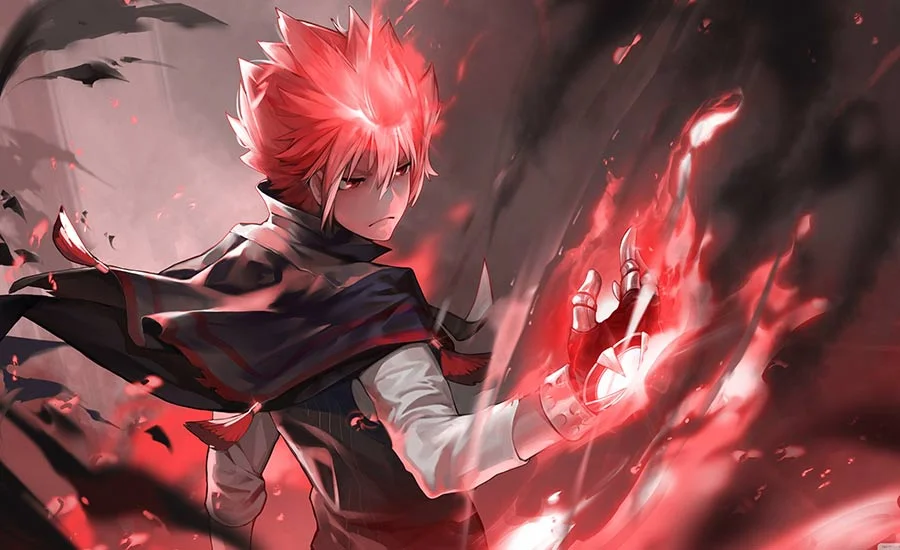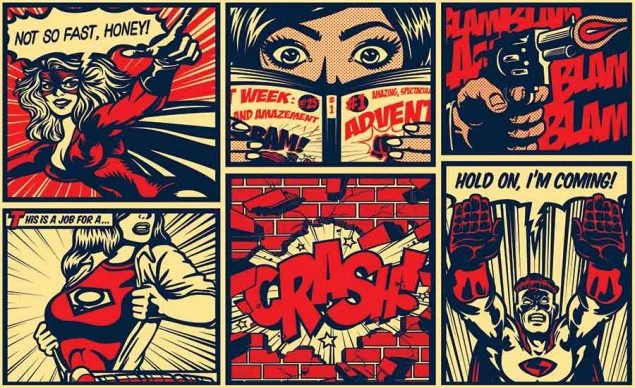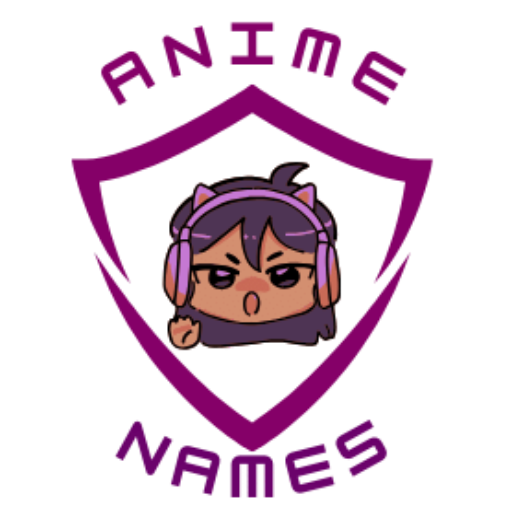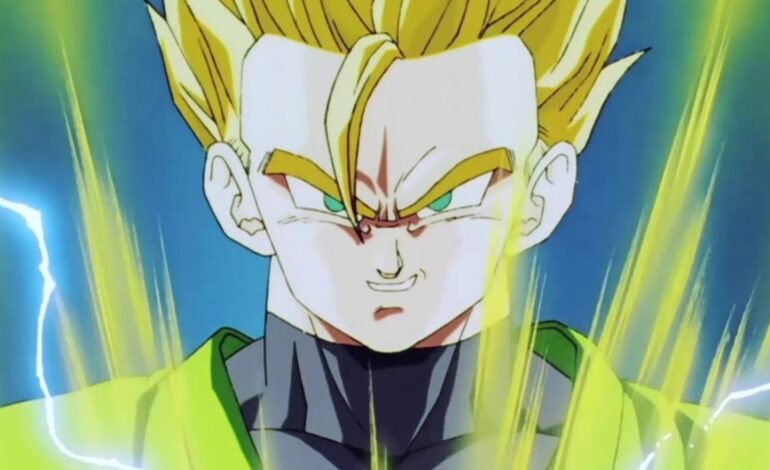Anime Genres Explained:
Anime is a unique form of entertainment that originated in Japan and has captured the hearts of fans around the world. At its core, anime is a style of animation with its own distinct art, storytelling, and cultural elements. For fans, understanding anime genres is key to discovering what they enjoy most, as genres guide the tone, themes, and audiences of each show or movie. In this article, we’ll break things down into three main categories: demographics (like shonen or shojo), genres (such as action or romance), and special themes (like isekai or slice of life). Whether you’re new to anime or a seasoned viewer, exploring these categories will help you better navigate the exciting world of anime names.

The Five Main Types of Anime and Manga: Explained
Anime and manga are diverse and vibrant mediums, each offering a range of stories tailored to different audiences. The best way to understand them is to explore the five main categories, which reflect both the intended audience and the type of content. These categories are Kodomomuke, Shonen, Shojo, Seinen, and Josei. Let’s explore each of these in detail, breaking down what makes them unique and why they matter in the anime and manga world, including iconic anime hair styles that often define these genres.
Kodomomuke
Kodomomuke is the category of anime and manga made specifically for children. The name translates to “directed at children,” and these stories are designed to entertain while teaching important lessons about friendship, kindness, and problem-solving.
Shows like Doraemon and Pokémon are perfect examples. They often have colorful visuals, simple language, and themes that are easy to understand. The main characters in Kodomomuke stories usually face challenges that require teamwork, creativity, and perseverance. These shows emphasize morals and values that resonate with young viewers.
Despite being targeted at kids, Kodomomuke can also appeal to adults who appreciate wholesome and nostalgic storytelling. Parents often enjoy watching these shows with their children, as they create a shared experience and introduce universal values.
Shonen or Shounen
Shonen, which means “boy” in Japanese, is aimed primarily at teenage boys. These stories are action-packed and full of excitement, with themes of heroism, friendship, and personal growth. Shonen often features young protagonists striving to overcome challenges, whether it’s defeating villains, mastering skills, or achieving a dream.
Popular examples include Naruto, Dragon Ball Z, and One Piece. The battles, adventures, and emotional moments in these stories have a universal appeal that transcends age and gender. Shonen also emphasizes camaraderie, with strong bonds between characters driving the plot forward.
Action isn’t the only thing you’ll find in Shonen. Comedy and lighter moments are often mixed in, making the stories engaging and relatable. Whether it’s a ninja’s quest to become the strongest or a pirate’s journey to find treasure, Shonen offers something for everyone who loves thrilling adventures.
Shojo or Shoujo
Shojo, meaning “girl,” caters to teenage girls. These stories focus on relationships, emotions, and personal growth, often with elements of romance, drama, and fantasy. Shojo anime and manga typically feature female protagonists navigating life, love, and friendships.
Classics like Sailor Moon and Fruits Basket fall under this category. The art style is often soft and detailed, with characters who are expressive and emotionally relatable. The storytelling highlights emotional connections and personal struggles, making Shojo a favorite for readers who enjoy heartfelt narratives.
Shojo also explores themes like self-discovery, empowerment, and overcoming challenges. While romance is a common theme, these stories often go beyond it to highlight personal resilience and the importance of meaningful relationships.
Seinen
Seinen targets adult male audiences, offering mature themes and more complex storytelling. The content is often darker, grittier, or more philosophical compared to Shonen. Seinen explores a wide range of genres, from action and horror to slice of life and science fiction.
Examples like Berserk and Ghost in the Shell showcase the depth of Seinen stories. They often feature morally complex characters, thought-provoking plots, and themes that challenge conventional ideas. The visuals can be more detailed and graphic, reflecting the mature tone of the content.
Seinen doesn’t shy away from exploring difficult topics like politics, society, and existential questions. These stories appeal to viewers who enjoy narratives that make them think and feel deeply about the world around them.
Josei
Josei, meaning “woman,” is aimed at adult female audiences. These stories focus on realistic portrayals of relationships, careers, and life experiences. Unlike Shojo, which often leans into fantasy and idealized romance, Josei takes a more grounded approach.
Series like Nana and Paradise Kiss are standout examples. They explore the highs and lows of love, friendship, and personal growth with a level of depth that resonates with older viewers. The art style is often elegant and sophisticated, reflecting the mature themes of the stories.
Josei also tackles topics like work-life balance, personal ambition, and the complexities of adulthood. These stories are relatable for women navigating life’s challenges, making them both entertaining and emotionally resonant.
Different Genres in Anime & Manga
Anime and manga are beloved for their incredible variety, offering something for every kind of viewer or reader. Genres play a huge role in defining the story’s tone, style, and themes, making it easier to find what suits your preferences. Whether you’re into thrilling battles, heartwarming romances, or chilling mysteries, the genre guides the type of experience you’ll enjoy.
Genres are more than just labels; they help categorize the storytelling. Some are purely narrative, like action or romance, while others combine elements of fantasy, horror, or drama. These genres can overlap, making anime and manga even more exciting. Let’s explore some popular genres and what makes each unique.

Action
Action is one of the most popular genres in anime and manga, filled with high-energy sequences and thrilling moments. It often includes battles, chases, and fast-paced events that keep you on the edge of your seat. Think of Attack on Titan or Demon Slayer—both are perfect examples of gripping action stories.
Characters in action series are often on a mission, whether it’s defeating a villain or saving the world. The stakes are high, and the tension keeps building as the story progresses. These narratives frequently feature amazing fight choreography, stunning visuals, and emotionally charged moments that resonate with viewers.
Romance
Romance focuses on relationships, emotions, and the journey of falling in love. These stories can be sweet, heartwarming, or even tragic. Your Lie in April and Toradora! are great examples of romance anime that capture the ups and downs of relationships.
This genre often highlights the characters’ inner struggles, misunderstandings, and moments of vulnerability. Whether the setting is a high school, a magical world, or an everyday city, the emotional depth makes these stories relatable and touching.
Fantasy
Fantasy transports readers and viewers to imaginative worlds filled with magic, mythical creatures, and epic adventures. It’s a genre that allows limitless creativity, from the enchanting kingdoms in Sword Art Online to the magical battles in Fairy Tail.
Fantasy stories often feature a hero or group of characters embarking on quests or fighting against dark forces. These narratives combine compelling characters with rich settings, creating unforgettable adventures.
Comedy
Comedy anime and manga aim to make you laugh with funny situations, quirky characters, and hilarious dialogues. One Punch Man and KonoSuba are shining examples of how humor is used effectively in storytelling.
The comedy genre often uses exaggeration, slapstick humor, and unexpected twists to create laughs. These stories are light-hearted and perfect for lifting your mood after a long day.
Horror
Horror in anime and manga is designed to send shivers down your spine. From psychological thrillers like Death Note to supernatural scares in Tokyo Ghoul, this genre explores dark and eerie themes.
Horror often combines suspense, fear, and shocking visuals to create a gripping experience. It’s perfect for fans who enjoy exploring the darker side of storytelling.
Special Themes in Manga & Anime
Anime and manga are known for their ability to explore unique and fascinating themes, setting them apart from other storytelling mediums. Special themes in these works often revolve around specific ideas, genres, or scenarios that create an immersive and captivating experience. These themes not only define the narrative but also attract fans with different interests and tastes. Let’s explore some of the most popular and exciting special themes in anime and manga.

Isekai: Another World Adventures
One of the most popular themes in recent years is Isekai, which means “another world” in Japanese. These stories revolve around characters being transported to a completely different world, often a fantastical or magical one. Commonly, the main character starts as an ordinary person who is thrust into extraordinary circumstances, such as battling monsters or becoming a hero.
Examples like Re:Zero and Sword Art Online are iconic in this genre. They offer a mix of adventure, drama, and personal growth as characters navigate their new surroundings. Isekai often explores themes of survival, adaptation, and self-discovery, making it both thrilling and relatable.
Slice of Life: Everyday Stories
For those who prefer something more grounded, the Slice of Life theme offers a glimpse into ordinary, everyday experiences. These stories focus on relatable moments, such as friendships, school life, or simple joys like sharing a meal. The charm of Slice of Life lies in its ability to make mundane events feel meaningful and heartwarming.
Anime like Clannad and March Comes in Like a Lion beautifully capture the essence of daily life. Through thoughtful storytelling and rich character development, these series allow viewers to connect emotionally with the characters and their experiences.
Mecha: Robots and Technology
Mecha anime and manga center on giant robots and advanced technology, often set in futuristic or post-apocalyptic worlds. These stories typically involve epic battles, political intrigue, and the relationship between humans and machines.
Popular examples include Mobile Suit Gundam and Neon Genesis Evangelion. Mecha often explores philosophical and ethical questions, such as the consequences of technological advancement and the cost of war. Fans of science fiction and action will find this theme especially captivating.
Horror and Psychological Thrills
Horror-themed anime and manga aim to unsettle and thrill their audience. These stories often involve supernatural elements, suspenseful plots, and eerie atmospheres. Psychological themes, on the other hand, delve into the complexities of the human mind, exploring fears, emotions, and moral dilemmas.
Series like Tokyo Ghoul and Monster masterfully blend horror and psychological elements, creating intense and thought-provoking narratives. These themes challenge viewers to confront their own fears and question what drives human behavior.
Post-Apocalyptic Worlds
Post-apocalyptic themes explore life after catastrophic events, such as natural disasters, wars, or pandemics. These stories focus on survival, rebuilding society, and the resilience of the human spirit.
Titles like Attack on Titan and Akira are standout examples. They present harsh realities and moral conflicts while showcasing the strength of individuals and communities. The settings often feel bleak, yet the stories are filled with hope and determination.
Historical Settings and Mythology
Historical and mythology-themed anime and manga bring the past to life, blending real events with creative storytelling. These works often highlight traditional cultures, legendary figures, or ancient myths.
Series like Rurouni Kenshin and Magi: The Labyrinth of Magic immerse viewers in beautifully crafted worlds inspired by history and folklore. These themes educate while entertaining, offering a perfect mix of action, drama, and cultural insight.
FAQs
How Many Genres Are There In Anime?
Anime has a wide range of genres that cater to various interests. While there isn’t a universally agreed number, the most commonly recognized genres include action, adventure, comedy, drama, fantasy, horror, romance, sci-fi, and slice of life. Sub-genres like isekai, mecha, and psychological further expand this list. Some genres are highly specific, creating an almost limitless variety for anime fans to explore.
What Are the Top 5 Anime Genres?
The top five anime genres are action, adventure, romance, fantasy, and slice of life. Action is known for its high-energy battles and intense storytelling, with popular titles like Naruto and Dragon Ball Z. Adventure takes viewers on epic journeys, as seen in One Piece. Romance focuses on relationships, with fan favorites like Toradora! Fantasy immerses audiences in magical worlds, like Sword Art Online, and slice of life showcases realistic, everyday experiences, such as March Comes in Like a Lion.
What Are the 4 Main Anime?
The four main anime types are defined by demographics:
- Kodomomuke: Designed for children, such as Pokemon and Doraemon.
- Shonen: Targeted at young male audiences, with action-packed series like My Hero Academia.
- Shojo: Focused on young female viewers, with themes of romance and friendships, such as Sailor Moon.
- Seinen: Created for adult men, featuring mature content like Tokyo Ghoul and Berserk.
Each type appeals to its audience through specific themes and storytelling approaches.
What Is the Most Popular Anime Genre?
Action is considered the most popular anime genre, captivating audiences with thrilling fight scenes and heroic journeys. Iconic titles like Attack on Titan, Naruto, and One Piece dominate this category. Fans enjoy the dynamic characters, intense battles, and fast-paced narratives that action anime consistently delivers. This genre’s appeal crosses demographics, making it a favorite worldwide.
Are Anime Genres the Same As Categories?
Anime genres and categories are related but not identical. Genres define the story’s theme, such as fantasy, romance, or sci-fi. Categories, on the other hand, are based on the intended audience or format. For example, shonen is a category targeting young boys, while seinen is aimed at adults. Categories often encompass multiple genres within their stories.
Can Anime Belong to Multiple Genres?
Yes, most anime belong to multiple genres, blending themes to create diverse stories. For instance, Sword Art Online combines fantasy, adventure, and romance. Death Note merges psychological, thriller, and supernatural elements. This cross-genre approach allows creators to craft complex narratives that appeal to broader audiences.
What Are Some Unique Anime Genres?
Unique anime genres include:
- Isekai: Stories about characters transported to other worlds, like Re:Zero.
- Mecha: Focused on giant robots and advanced technology, seen in Neon Genesis Evangelion.
- Sports: Highlighting competitive athleticism, such as Haikyuu!!.
- Psychological: Exploring the mind and moral dilemmas, like Death Note.
These genres stand out for their innovative storytelling and specialized themes.
Why Are Anime Genres Important?
Anime genres help viewers find stories that match their interests. They provide a framework for creators to develop themes and narratives that resonate with specific audiences. Genres also make it easier for newcomers to navigate anime’s vast variety by offering clear classifications.
How Can I Find Anime in My Favorite Genre?
You can find anime in your favorite genre by using platforms like MyAnimeList, Crunchyroll, or Funimation. These websites allow you to search by genre and explore detailed lists of anime titles. You can also join online communities or forums where fans recommend shows based on specific interests.
What Is the Difference Between Shonen and Shojo Anime?
Shonen anime targets young male audiences with action and adventure themes, as seen in Dragon Ball Z and Naruto. Shojo anime, on the other hand, is aimed at young female viewers and often focuses on romance and emotional growth, with examples like Ouran High School Host Club and Sailor Moon. The primary difference lies in the themes and the intended audience.


